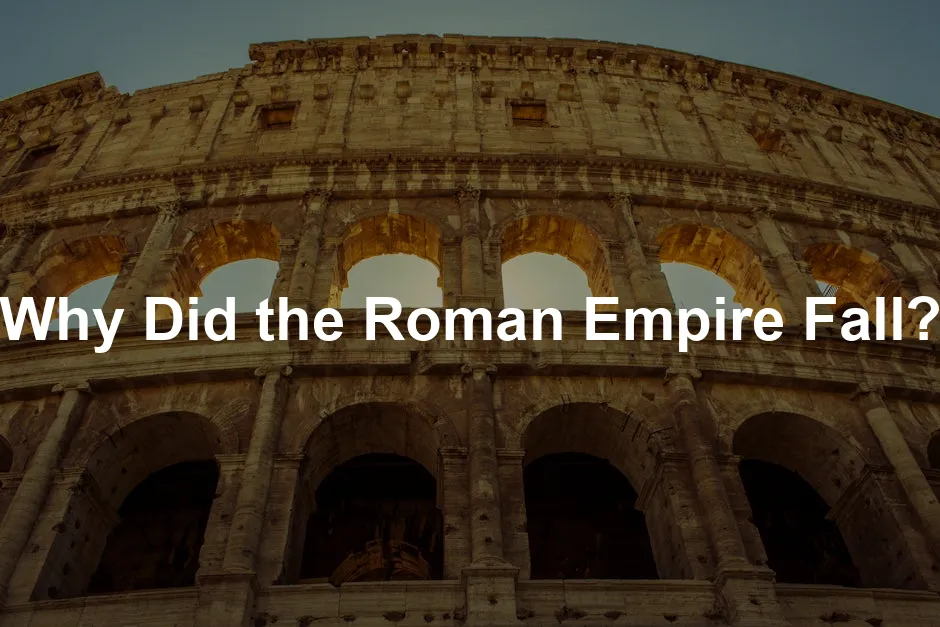
Why Did the Roman Empire Fall?
Introduction
The fall of the Roman Empire remains a captivating topic. It shaped historical studies and profoundly impacted modern civilization. Understanding its decline offers lessons relevant to our own times.
If you’re looking to dive deeper into this fascinating subject, consider picking up The History of the Decline and Fall of the Roman Empire by Edward Gibbon. This seminal work provides an in-depth look at the empire’s complexities and the myriad factors that contributed to its downfall.
Summary and Overview
Several key factors contributed to the fall of the Roman Empire. Historians debate the timeline and reasons for its decline. Some argue the process began in the 3rd century, while others pinpoint 476 AD as the decisive moment. The Western Roman Empire faced rapid fragmentation, while the Eastern Roman Empire, also known as the Byzantine Empire, continued to thrive. This divergence highlights the complexities behind the empire’s fall and its lasting effects on Europe.
For a concise yet enlightening overview, check out Roman Empire: A Very Short Introduction by Christopher Kelly. It provides a quick dive into the major themes and events that shaped this ancient powerhouse.
The Historical Context of the Roman Empire
The Roman Empire rose to prominence around 27 BCE. Augustus, its first emperor, ushered in an era of stability known as the Pax Romana. At its height, the empire stretched across Europe, North Africa, and the Middle East. Innovations in governance, engineering, and law marked its achievements. Roads, aqueducts, and monumental buildings demonstrated Roman ingenuity, influencing future civilizations.
Speaking of Roman ingenuity, if you’re curious about the military side, you might enjoy The Complete Roman Army by Adrian Goldsworthy. This book offers a detailed look at the military structure that helped Rome maintain control over its vast territories.
Culturally, Rome served as a melting pot. It absorbed diverse traditions, languages, and religions, creating a rich tapestry of life. Roman law laid the groundwork for modern legal systems. However, the empire faced challenges as it expanded. Managing vast territories proved difficult, leading to administrative inefficiencies.
By the 3rd century, the empire encountered significant issues. Economic troubles, military overreach, and political corruption weakened its foundations. The division of the empire by Diocletian in the late 3rd century aimed to address these problems. However, it ultimately set the stage for the West’s decline while the East prospered.
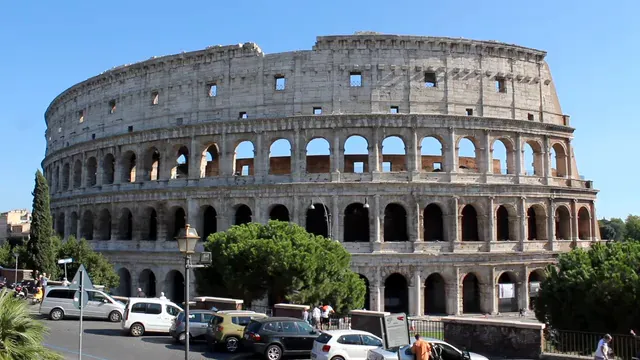
Major Factors Leading to the Fall
Barbarian Invasions
The Germanic tribes posed a significant threat to the Roman Empire. As they migrated southward, many sought refuge from the Huns. By 376 AD, these tribes, including the Visigoths and Vandals, breached Roman borders. The Visigoths, led by Alaric, famously sacked Rome in 410 AD. This marked a major turning point. The Vandals followed suit, capturing Carthage in 439 AD and later sacking Rome again in 455 AD.
If you’re interested in a detailed narrative about the rise and fall of the empire, SPQR: A History of Ancient Rome by Mary Beard provides an engaging exploration of Rome’s history, including its interactions with barbarian tribes.
Internal Political Instability
Political turmoil significantly contributed to Rome’s decline. Civil wars erupted frequently, creating chaos. After Theodosius I’s death in 395 AD, the empire split between his sons. This division weakened central authority. Leadership changes were rapid; over 20 emperors ruled in just 75 years. Many emperors were ineffective, more focused on personal power than stability.
Key figures, such as Commodus and Honorius, failed to maintain control. Their lack of decisive action allowed local leaders and military generals to gain influence. The Senate, once a powerful body, became increasingly corrupt and inept. This internal strife eroded public trust. The empire’s inability to present a united front ultimately left it vulnerable to external threats.
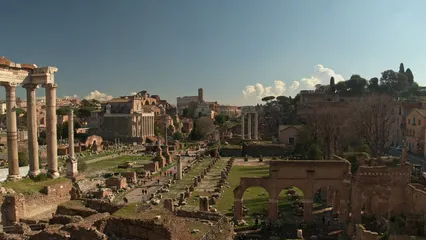
Economic Decline
The Roman economy faced serious challenges. Warfare drained resources, causing heavy taxation and inflation. The reliance on slave labor further exacerbated these issues. With fewer conquests, the supply of new slaves dwindled. Agricultural output declined as land was abandoned. This economic downturn created a stark divide between the rich and poor.
For a more comprehensive understanding of the economic aspects, consider The Fall of the Roman Empire: A New History of Rome and the Barbarians by Peter Heather. It addresses the economic and social factors that led to the empire’s decline.
Wealthy citizens fled to rural estates, isolating themselves from the crumbling urban centers. The growing social divide led to unrest. Trade deficits worsened as the empire lost territories, impacting commerce. By the 5th century, the economic structure was fragile. The combination of financial strain and social unrest was detrimental to the empire’s stability.

In summary, the fall of the Roman Empire resulted from a blend of external invasions, internal political strife, and economic decline. Each factor intertwined, creating a perfect storm that led to the empire’s eventual collapse. Understanding these elements provides valuable insights into the fragility of even the mightiest civilizations.
Cultural and Religious Transformations
The rise of Christianity significantly impacted traditional Roman values. Initially, the empire practiced polytheism, worshipping many gods and emphasizing the divine status of the emperor. This polytheistic culture began to shift with the legalization of Christianity through the Edict of Milan in 313 CE. This decree granted religious tolerance, allowing Christianity to flourish openly.
As Christianity spread, it reshaped societal norms and values. The focus shifted from civic duty and loyalty to the state to personal faith and devotion to a single deity. This transformation created conflict with established Roman traditions. Some historians argue that this change undermined the empire’s unity, as Christians prioritized their faith over civic responsibilities.

If you’re interested in the broader context of Roman history, The Rise of Rome: The Making of the World’s Greatest Empire by Anthony Everitt is a great read. It details the early successes of Rome and how they set the stage for its eventual decline.
By 380 CE, Christianity became the official state religion, further solidifying its influence. The growing power of the Church diverted resources and authority from the imperial government. As a result, traditional Roman values began to wane, leading to cultural changes that contributed to the empire’s decline.
Division of the Empire
In 395 CE, the Roman Empire officially divided into two parts: the Western and Eastern Roman Empires. This split was significant, as it marked the beginning of divergent fates for both halves. The Western Empire, with Rome as its capital, faced continuous invasions and political instability.
In contrast, the Eastern Empire, centered in Constantinople, experienced relative prosperity. Key figures like Theodosius I played crucial roles in this division. After his death, his sons inherited separate territories, leading to weakened central authority in the West.
The fates of these two empires diverged rapidly. While the West crumbled under external pressures and internal strife, the East thrived for centuries. This division played a critical role in the eventual fall of the Western Roman Empire, highlighting the challenges of governance and unity in such a vast territory.
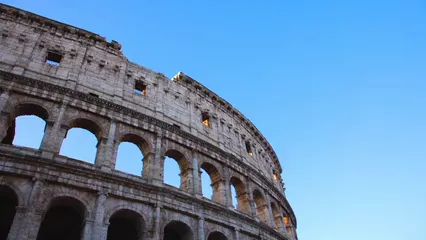
Military Ineffectiveness
The decline of the Roman legions marked a significant factor in the empire’s fall. Once renowned for their discipline and strength, the military faced challenges in recruitment and morale. As Rome expanded, it became increasingly reliant on mercenaries. These foreign fighters often lacked loyalty to the empire, leading to serious trust issues within the ranks.
Military defeats, such as the Battle of Adrianople in 378 CE, further exposed the vulnerabilities of the Roman army. The Visigoths, led by Fritigern, dealt a crushing blow to the Roman forces, killing Emperor Valens. This defeat was a turning point, signaling the decline of military effectiveness.
As the empire struggled to maintain control, the reliance on mercenaries worsened. Many of these soldiers turned against their employers, contributing to the empire’s fragmentation. The loss of military strength weakened Rome’s ability to defend its borders, paving the way for further invasions and ultimately leading to its downfall.

Historical Interpretations and Theories of Decline
The fall of the Roman Empire is a topic rich in debate. Edward Gibbon, an 18th-century historian, famously argued that moral decay, alongside external pressures, led to its downfall. His work, The History of the Decline and Fall of the Roman Empire, sparked numerous discussions. Gibbon’s perspective laid the groundwork for various interpretations that emerged over time.
For those looking for a captivating read on this topic, The Roman Revolution by Ronald Syme offers a fresh perspective on the political upheaval that contributed to the empire’s decline.
Historians categorize these views into four main schools of thought. The first is the theory of general malaise. This perspective suggests that the empire suffered from widespread decay. It attributes the decline to a loss of civic virtue and societal cohesion. Critics argue that this viewpoint oversimplifies the complexity of the empire’s challenges.
The second school, monocausal decay, posits a single cause led to the fall. Some historians argue that economic troubles or military defeats were the primary drivers. However, this approach often overlooks the interconnected nature of the empire’s issues.
The third theory is the catastrophic collapse model. This view suggests that the fall resulted from a combination of crises, including invasions, civil wars, and economic decline. It portrays the collapse as sudden and dramatic, influenced by external pressures from barbarian tribes.
The fourth interpretation focuses on transformation. Scholars in this camp argue that the empire did not simply fall; rather, it evolved into something new. They highlight the continuity of Roman culture and governance in the Byzantine Empire. This perspective emphasizes the gradual transition rather than a clear-cut end.

Contemporary scholarship continues to evolve. Modern historians are integrating new methodologies. They explore environmental factors, such as climate change and pandemics, that may have influenced the empire’s decline. This multifaceted approach acknowledges the complexity of the Roman Empire’s fall, offering a richer understanding of historical events.
The Last Days of the Western Roman Empire
The final days of the Western Roman Empire culminated in 476 AD. This year marked a significant turning point. Romulus Augustulus, a young emperor, was deposed by Odoacer, a Germanic leader. Odoacer’s coup signified the end of imperial rule in the West.
If you want to understand the significance of this event, Roman History: A Very Short Introduction by Christopher Kelly provides an excellent overview of the events leading up to this moment.
Leading up to this event, the empire faced numerous challenges. Internal strife weakened political authority. Civil wars and ineffective leadership plagued the empire. As a result, the position of the emperor had become largely symbolic.
After the deposition of Romulus, the immediate aftermath was striking. Odoacer did not claim the title of emperor. Instead, he declared himself king of Italy. He sent the imperial regalia to the Eastern Roman Emperor Zeno, marking a shift in power dynamics.
This transition was not merely a political change. It symbolized the fragmentation of the empire. The once-mighty Western Roman Empire had crumbled, leaving behind a legacy that would shape Europe for centuries. The fall of the West did not erase Roman culture, as its influences persisted through various successor states.
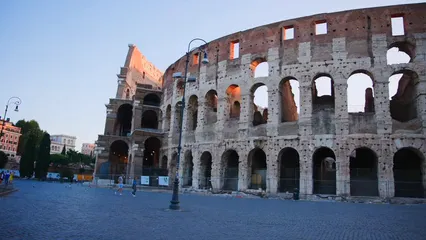
Conclusion
The fall of the Roman Empire was a complex event shaped by various factors. We discussed how barbarian invasions, political instability, and economic decline all played pivotal roles. The empire’s inability to adapt to changing circumstances, both internally and externally, led to its downfall.
This historical event still resonates today. The legacy of Rome influences modern governance, law, and culture. Many legal systems around the world trace their roots back to Roman law. Additionally, concepts of citizenship and civic duty continue to shape societies. Understanding this fall provides valuable lessons about the importance of unity and resilience in governance.
FAQs
What were the main reasons for the fall of the Roman Empire?
The fall resulted from a mixture of invasions, internal strife, and economic decline. Barbarian tribes breached borders and established kingdoms. Political chaos weakened leadership, while economic troubles led to widespread poverty and unrest.
When did the fall of the Roman Empire occur?
Historians often cite different dates. The traditional date is 476 AD, when Romulus Augustulus was deposed. However, some argue that the decline began much earlier, around the 3rd century.
Was the Eastern Roman Empire affected by the fall?
Yes, the Eastern Roman Empire, or Byzantine Empire, continued to exist for nearly a thousand years after the West fell. It thrived while the West faced invasions and fragmentation.
How did Christianity contribute to the fall of Rome?
The rise of Christianity shifted societal values. Traditional Roman beliefs in civic duty diminished. As the state religion, Christianity redirected resources from the imperial government, impacting its authority.
What lessons can modern societies learn from the fall of the Roman Empire?
Modern societies can learn about the dangers of political instability and economic inequality. A strong, unified government is crucial for facing external threats. Balancing tradition with change remains vital for lasting success.
Please let us know what you think about our content by leaving a comment down below!
Thank you for reading till here 🙂
All images from Pexels




